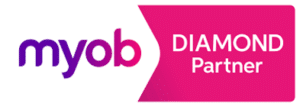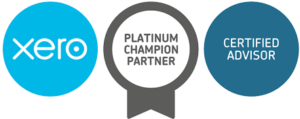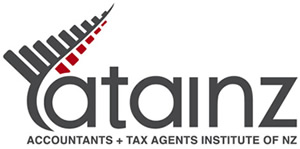The ultimate guide to
Understanding Your Kiwitax Annual Accounts and Financial Reports
Financial reports can be confusing, especially if you’re not an accountant. They often contain technical terms and detailed figures. At Kiwitax, we prepare these reports following professional standards set by ATAINZ (Accountants and Tax Agents Institute of New Zealand), but we also want you to understand what you’re getting.
So, what exactly is included in your Kiwitax annual accounts, and what does each part mean?
Let’s break it down.
What’s Included in Your Kiwitax Annual Accounts?
To explain, we’ll use fictional rental accounts for a jointly owned residential rental with long-term tenants. Keep in mind, if you own a business, your reports may look a bit different.
Here’s what you’ll typically receive:
What Do These Documents Mean?
Annual Accounts Letter
This is a summary of how your business performed financially over the year.
It highlights key figures like your profit and explains how your accountant has structured things to help reduce the amount of tax you need to pay.
It also includes advice on paying your tax and planning for the future.
Tax Payment Calendar
This calendar shows when your tax payments are due. It includes:
- The type of tax (e.g. provisional tax)
- The due date
- The amount to pay
- Who the payment is for (either the business or one of the owners)
Financial Reports
These are the core financial documents. They include:
- A summary of your business
- Statement of Financial Performance – shows your income and expenses
- Statement of Changes in Equity – shows changes in ownership value
- Balance Sheet – shows what your business owns and owes
- Depreciation Schedule – shows how your assets lose value over time
- Shareholder Current Accounts – tracks money owed to or from shareholders
- Notes – extra details to help explain the numbers
Taxation Details
This section outlines your tax responsibilities. It shows how your accountant has arranged things to keep your tax bill as low as legally possible.
For a company, it includes:
- IR4 Company Tax Summary – for the business
- IR3 Individual Tax Summaries – for each owner (if needed)
Documents to Sign
These are the official papers that confirm your financial and tax information. The directors of the business need to sign these so Kiwitax can submit your tax return to Inland Revenue (IRD). This section also includes meeting minutes to complete the process.
Company Annual Accounts and Financial Reports FAQs
Yes, if your shareholder current account is in credit (meaning the company owes you money), you can repay yourself from available company funds without paying tax. This is often referred to as taking drawings.
Future profit can be used to repay you — but only after the company pays tax on that profit. Once the company has after-tax cash, it can use it to repay your shareholder account balance without creating a tax issue for you.
Because the company didn’t make a profit this year, no shareholder salary was declared. That’s normal, shareholder salaries are usually paid from company profits, and they are treated as a business expense that helps reduce the company’s taxable income.
If you take drawings (money out of the business) but no salary is declared, the amount you take simply reduces your shareholder current account, meaning the company owes you less.
Declaring a shareholder salary in profitable years can be more tax-efficient, as it allows the company to claim the salary as a tax-deductible expense, and helps keep your shareholder current account in balance with what’s actually paid to you.
It depends on your business’s profitability and how you want to manage your tax.
Taking a PAYE salary or wage (like an employee) can be more tax efficient, especially when your company is making a steady profit. That’s because salaries are a deductible business expense, they reduce the company’s profit, which means the company may pay less tax overall. It also keeps your income tax and ACC levies up to date throughout the year.
On the other hand, drawings are simply money taken out of the business by the shareholder. They’re not tax-deductible and don’t reduce the company’s tax bill. Drawings are recorded against your shareholder current account, and if you take more than the company owes you, it could create extra tax or reporting obligations.
Many business owners start with drawings and move to a PAYE salary once profits are more predictable.
We recommend reviewing your situation regularly and adjusting your approach as your business grows.
In most cases, this is simply a timing difference. If your business is registered for PAYE, it’s normal to see a balance here at year-end, this usually reflects the March PAYE that’s due for payment in April.
However, in some situations, the figure might include overdue amounts from earlier months that haven’t yet been paid.
So, while it often represents just one month’s PAYE, it can vary depending on your payment schedule (you could pay PAYE more frequently) or if any past amounts are still owing.
Not necessarily. A GST payable balance as at 31 March often reflects GST that’s due for payment after balance date, so it’s often just a timing difference.
However, the figure could also include overdue GST from previous periods that hasn’t yet been paid. Therefore, could also be a combination of overdue and upcoming GST amounts.
Not at all. A negative ICA (Imputation Credit Account) balance is normal and means the company has tax credits.
The ICA tracks tax paid by the company to Inland Revenue (IRD). When your company eventually pays a dividend to shareholders, it can attach these tax credits to the dividend — helping reduce the amount of tax the shareholder has to pay on that income.
Yes, if you’re taking shareholder wages, you likely don’t need to pay provisional tax personally. The company only pays provisional tax if it’s earning taxable profit.
If profits grow, the company may need to pay provisional tax. Keeping your shareholder salary at a suitable level can reduce this burden.
A detailed breakdown is available in your financial reports.
Assets only appear on the asset schedule if their cost was over $1,000 + GST. If the item cost less than that, it’s treated as a regular expense and fully claimed in the year it was purchased.
This is because they are reported on the GST exclusive values.
Another reason could be that 20% of their purchase price was expensed under the Investment Boost Scheme.



